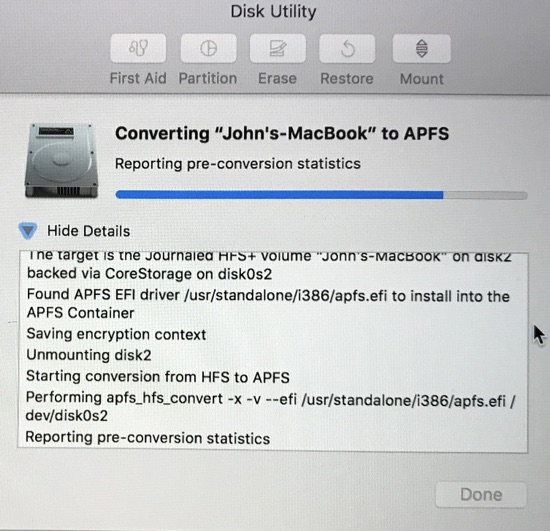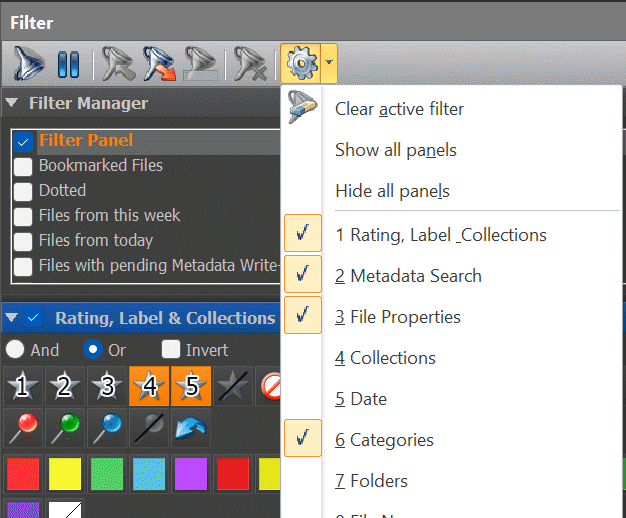Convert Apfs To Hfs
In 2018, Apple released macOS Mojave. It was instantly loved by many.

However, there was a minor problem. One of its noteworthy and newest features was nearly invisible: the new file system.If Mojave is installed on a Mac with a solid-state drive (SSD), the underlying file system is automatically switched from Mac OS Extended or the HFS+ to the new Apple File System (APFS). This is something that not everyone knows about.Although there were a few ways that things could have gone wrong, for many Mac users, the shift was almost seamless. They were unable to notice that their Macs were already running APFS.In case you wanted to find out and confirm if your Mac is running APFS, open Disk Utility, select your startup disk, locate your disk name, and click on it. All the information about your disk will be shown on your screen, including the file system type. What Are HFS+ and APFS?At this point, the concepts of HFS+ and APFS may still seem a bit vague.
So, we’ll try to differentiate both. HFS+HFS+ was the default file system of Apple devices in the years 1998 to 2017. Eventually, APFS replaced it. Still, HFS+ is used as the default file system of Apple devices that use hybrid and mechanical hard drives.It is preferred by some Mac users because it supports different macOS versions and is compatible with fusion drives. However, it only has limited native file support for some file systems. APFSAPFS is the latest file system of Apple. It was released in 2017 as a replacement for HFS+.
- Convert APFS volumes to HFS+ volumes. Create a recovery media in case of system disk conversion. Wizard helps to select the desired volume for conversion, gives you the option to back it up, then quickly performs the conversion.
- APFS to HFS+ Converter by Paragon Software easily reverts to the old good HFS+ for your specific scenarios. Create recovery media to boot up your Mac and then convert the system volume. Fast and lossless conversion of APFS volumes into HFS+ volumes.
Convert Apfs To Hfs+
Unless specified or changed by the user, this is automatically set as the default file system of an Apple device.But why should you use APFS? This file system allows full-disk encryption with multi or single-key encryption for an added layer of security. It also prevents metadata corruption because it creates new records instead of overwriting those that already exist. The most important downsides of using APFS are that compression is not available and that it does not support Fusion drives.
Can HFS+ Be Used in Mojave Instead of APFS?Now, if you have just recently upgraded to Mojave but still want to keep using HFS+, of course, you can. The only problem is that the command that is used to avoid APFS conversion won’t work all the time.To avoid the APFS conversion, you have two options. We listed them below: Method #1: Use an External Installer Media and Install Mojave on Your SSD Drive.One of the easiest and most popular ways to prevent APFS conversion during the installation of Mojave 10.14 on your SSD drive is to create a macOS installer media. Don’t worry because it’s easy to do and won’t take much time.However, before you proceed with this method, we suggest you back up all your data using Time Machine or any of the. This way, you can quickly restore your settings and data in the event that errors arise along the way. Moving forward, here’s how you can create a macOS Mojave installer media:. Switch off your Mac.
How to Revert a drive from APFS back to HFS+ Wednesday, December 19th, 2018 Author: Steve Sande. Apple’s new APFS (Apple File System) format is the default format for storage under macOS 10.14 Mojave, replacing the dependable and long-lived HFS+ format. However, there are still some instances where HFS+ needs to be used.
Connect your preferred macOS installer media. Switch on your Mac. While your Mac is starting up, press the Option key continuously to enter the Boot menu. Once the Boot menu appears, use the arrow keys to select macOS Mojave USB installer.
Hit Enter. Format your SSD drive using Disk Utility. Agree to the Terms and Conditions and proceed by selecting your newly formatted SSD drive. Your Mac will start to reboot.
